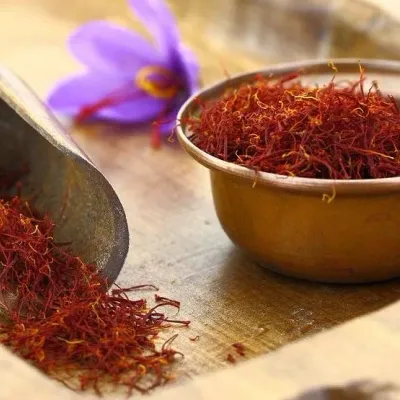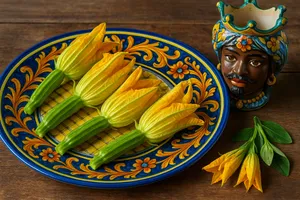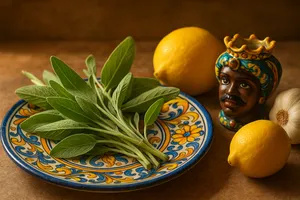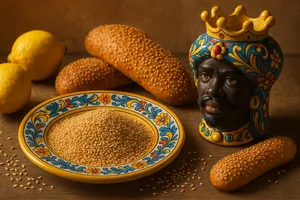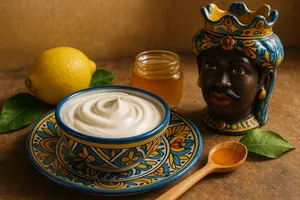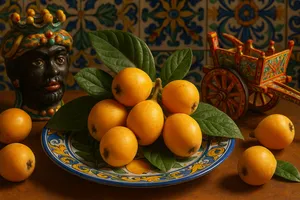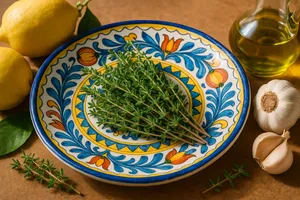Overview
Escarole (Cichorium endivia var. latifolia) is a type of endive belonging to the Asteraceae family, characterized by an open head of broad, gently wavy leaves-dark green on the outside and pale green to white at the center where the leaves are naturally shaded. It has the pleasantly bitter flavor typical of chicories.
In Sicilian cuisine, escarole is a traditional winter vegetable enjoyed both raw in salads-especially the tender, pale inner leaves-and cooked in many classic dishes: escarole sautéed with garlic and olive oil, stewed escarole with olives and capers, escarole in soups, or used as a filling for rustic pies and focaccias. It is a versatile ingredient that brings a pleasantly bitter freshness, often balanced with salty or rich components.
The cultivation of escarole is widespread in Sicilian autumn and winter gardens, where cool temperatures favor its development. It is easy to grow, resilient, and yields abundantly. In winter markets, bright green escarole heads-often sold with roots still attached-are a common sight. Though it requires careful cleaning to remove soil or insects between the leaves, its preparation is simple and firmly rooted in Sicilian home cooking. The bitterness, which some palates may find strong, is traditionally balanced with ingredients like olives, capers, anchovies, or generous amounts of olive oil.
Characteristics
Escarole forms an open, loose head with broad leaves (10–20 cm) featuring gently wavy edges and thick, pale ribs. The outer leaves are dark green, firmer, and more bitter. The inner leaves-the heart-are pale green to white, tender, and milder. A full head typically weighs between 300 and 800 grams.
The flavor is distinctly but pleasantly bitter, stronger in the outer leaves and delicate in the bleached inner heart. The bitterness comes from compounds like inulin and sesquiterpene lactones, typical of chicories. The texture is crisp when raw and soft when cooked.
Fresh escarole has bright, firm leaves and a compact base. It should be consumed relatively quickly, as it is highly perishable.
Escarole vs. Curly Endive
Both belong to Cichorium endivia, but they differ:
Escarole (var. latifolia):
Broad, smooth or slightly wavy leaves; open head; milder bitterness. This is the most common type in Sicily.
Curly endive (var. crispum):
Highly frilled, curly leaves; more compact head; stronger bitterness.
Both are used similarly: raw (usually the heart) or cooked. Choice depends on preference and availability.
Cultivation
Escarole is an autumn–winter crop grown from August to February in mild climates such as Sicily. It can be sown directly or transplanted after 4–6 weeks. It prefers fertile, well-drained soil and regular watering, and thrives in cool temperatures.
To obtain a tender, pale heart with reduced bitterness, growers may “blanch” the escarole: 10–15 days before harvest, the outer leaves are tied together to shade the center. This traditional technique enhances flavor and tenderness.
Harvest occurs 60–90 days after transplanting by cutting the head at its base. In Sicily, escarole is harvested from October to March.
Seasonality
Escarole is a typical winter vegetable. In Sicily it is available from October–November through March–April. Cool temperatures make escarole sweeter and less bitter. It is rarely grown in summer, as heat causes it to bolt rapidly.
Uses in Sicilian Cuisine
Escarole salad
The tender inner leaves are eaten raw, dressed with olive oil, vinegar or lemon, and salt. It pairs well with oranges, olives, anchovies, and capers. Outer leaves are usually too bitter for raw consumption and are used cooked.
Sautéed escarole
A classic preparation: escarole is briefly blanched, squeezed, then sautéed with olive oil, garlic, chili pepper, olives, and capers. A flavorful side dish served with meat, fish, or legumes.
Stewed escarole
Chopped escarole is stewed with olive oil, garlic, tomatoes, olives, capers, and optional anchovies, cooked slowly until tender.
Escarole soup
Escarole enriches winter soups: “minestra maritata,” legume soups, and broths with escarole and eggs.
Escarole pie
A Neapolitan classic widely adopted in Sicily: sautéed escarole with olives, capers, raisins, pine nuts, anchovies enclosed in a pastry or pizza dough, then baked.
Pasta with escarole
Less common but tasty: stewed escarole tossed with short pasta, anchovies, toasted breadcrumbs, and pecorino.
“Escarole ‘ncazzata”
A spicy traditional dish: blanched escarole sautéed with olive oil, garlic, and lots of chili, plus olives and anchovies.
Basic Preparation (Cooked Escarole)
- Remove damaged outer leaves and cut off the base.
- Wash thoroughly in cold water, changing the water several times.
- Bring plenty of salted water to a boil.
- Blanch escarole for 5–10 minutes.
- Drain and let cool slightly.
- Squeeze out excess water.
- Chop and sauté with desired seasonings.
Storage
Fresh escarole keeps 3–5 days in the refrigerator, unwashed, wrapped in paper or a perforated bag. It wilts quickly, so freshness is important.
Cooked escarole keeps 2–3 days in an airtight container in the refrigerator.
Buying Tips
Choose escarole with firm, bright leaves and no yellowing. The head should feel heavy for its size-a sign of freshness and hydration. Prefer heads with roots attached, common in Sicilian markets.
The heart should be well-developed, pale, and tender.
Nutritional Properties
Escarole is very low in calories (15–20 kcal per 100 g). It is over 90% water, contains 1–2 g protein, negligible carbohydrates, and no fats. It is rich in fiber, vitamins A, C, K, folate, and minerals like potassium, calcium, and iron.
It contains inulin (a prebiotic fiber) and sesquiterpene lactones, responsible for the bitterness and known for digestive and detoxifying properties.
It is diuretic, digestive, and mildly laxative-suitable for low-calorie diets and digestive support.
Escarole in Sicilian Tradition
Escarole has long been a staple of winter gardens in Sicily, valued for its resilience and abundance during months when other fresh vegetables are scarce. Families used both raw and cooked escarole to diversify winter meals without waste.
Sautéed escarole was a common daily side dish, its bitterness complementing legumes, potatoes, and fatty meats.
Curiosities
- The name “escarole” derives from the Latin escariolum, meaning “edible herb.”
- Blanching the head to create a pale, sweet center is an ancient technique practiced since Roman times.
- Sicilian tradition says: “Bitter vegetables are good for the liver,” reflecting their digestive benefits.
- Like all chicories, escarole improves soil structure with its deep roots.
- Soaking raw leaves in cold water for 30 minutes reduces bitterness.
- Outer bitter leaves were often fed to livestock-nothing was wasted in rural households.
- When allowed to flower in spring, escarole produces tall stems with light-blue chicory-like flowers, signaling the end of its culinary usefulness.


